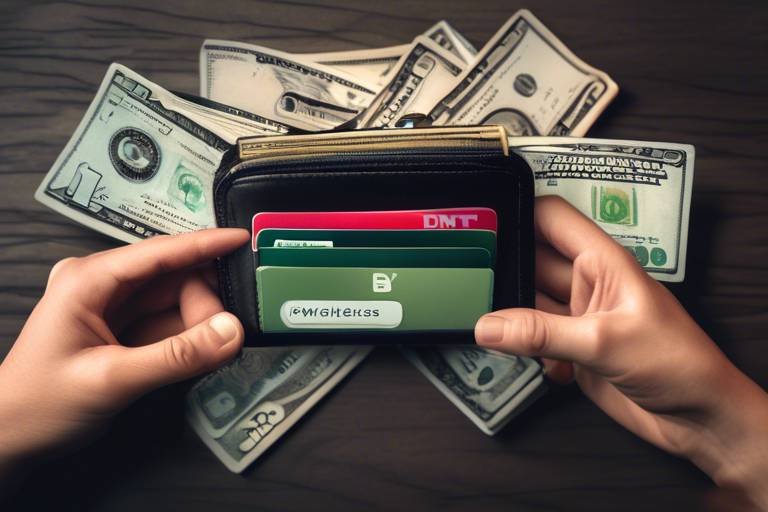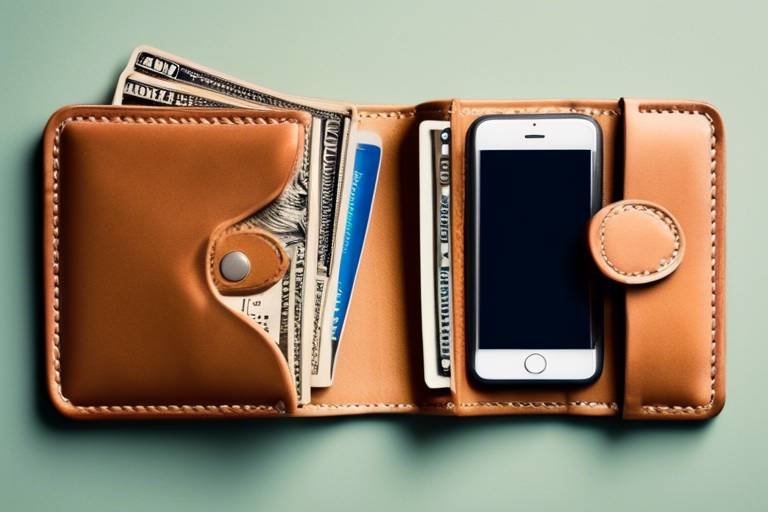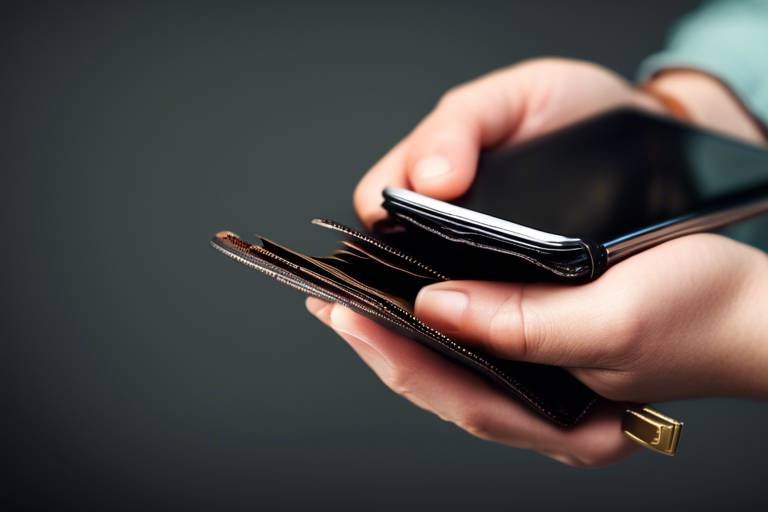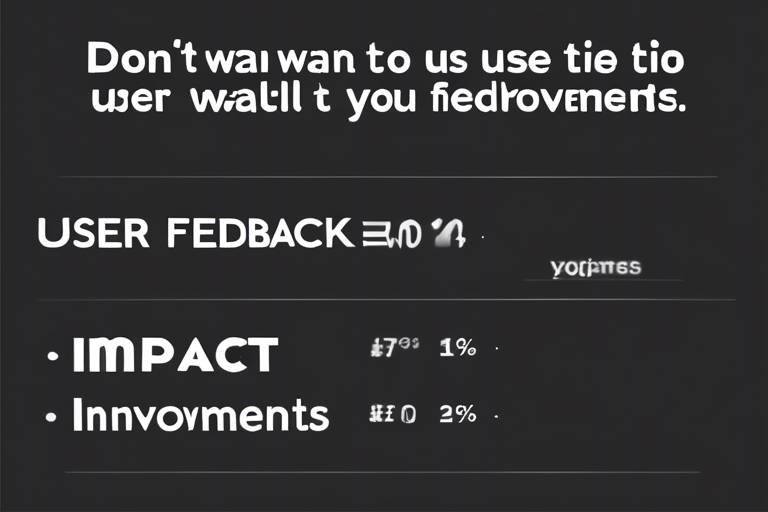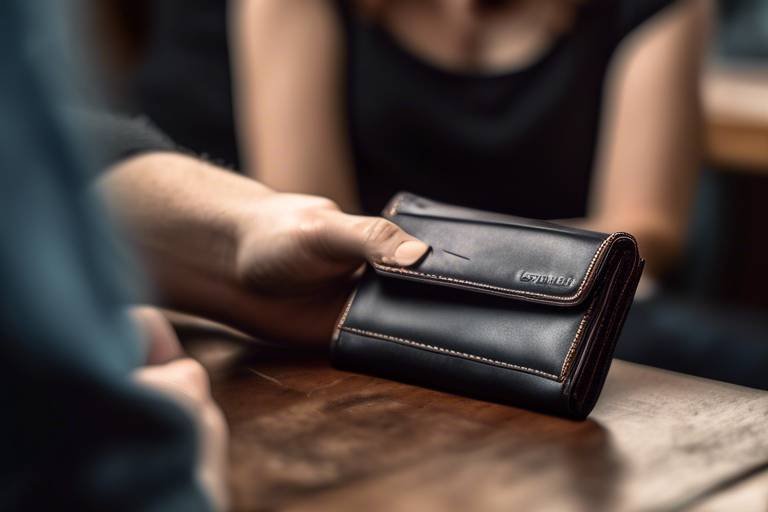The Best Resources for Learning About Crypto Wallets
In the rapidly evolving world of cryptocurrency, understanding crypto wallets is crucial for anyone looking to dive into this digital gold rush. Whether you're a seasoned investor or just starting your journey, having the right resources at your fingertips can make all the difference. Imagine trying to navigate a bustling city without a map—confusing, right? That's exactly how it feels to manage your crypto assets without proper knowledge of wallets. In this article, we'll explore essential resources that will help you grasp the ins and outs of crypto wallets, including their types, security measures, and practical guides.
First off, let’s break down what crypto wallets actually are. At their core, these wallets are tools that allow you to store, send, and receive cryptocurrencies. Think of them as your digital bank account, but instead of dollars, you're dealing with Bitcoin, Ethereum, and other digital currencies. However, not all wallets are created equal. They come in various forms, each with its own set of features, security levels, and user experiences. This is where understanding the different types of wallets becomes essential.
When it comes to learning about crypto wallets, there are several resources available that cater to different learning styles. For instance, if you're a visual learner, you might benefit from video tutorials that demonstrate wallet setup and transaction processes. On the other hand, if you prefer reading, there are numerous blogs and articles that provide in-depth explanations and comparisons of various wallet types. Websites like Coinbase Learn and Investopedia offer a wealth of information, from beginner's guides to advanced strategies.
Additionally, joining online forums and communities can provide you with real-time insights and support. Platforms such as Reddit and Telegram host groups where crypto enthusiasts share their experiences and best practices. Engaging with these communities can help you stay updated on the latest trends and security tips, making you a more informed user.
As you embark on your crypto wallet learning journey, remember that security is paramount. Many resources emphasize the importance of safeguarding your assets. Look for guides that explain essential security measures, like two-factor authentication and backup strategies. Understanding these practices can save you from potential losses due to hacks or device failures.
In summary, the best resources for learning about crypto wallets include a mix of tutorials, articles, and community engagement. By leveraging these tools, you'll be well-equipped to navigate the complex world of cryptocurrency storage confidently. So, are you ready to unlock the full potential of your crypto investments? Let's dive deeper into the types of wallets and their unique features in the next sections!
- What is a crypto wallet? A crypto wallet is a digital tool that allows you to store, send, and receive cryptocurrencies.
- What are the main types of crypto wallets? The main types include hot wallets (online), cold wallets (offline), and hardware wallets.
- How do I secure my crypto wallet? Implement strong passwords, enable two-factor authentication, and regularly back up your wallet.
- Can I lose my cryptocurrency? Yes, if you lose access to your wallet or if it gets hacked, you could lose your funds.
- Are there fees associated with using crypto wallets? Some wallets may charge transaction fees, while others may not. Always check the terms.

Understanding Crypto Wallets
In the rapidly evolving world of cryptocurrency, understanding crypto wallets is crucial for anyone looking to dive into this digital frontier. So, what exactly are crypto wallets? At their core, these wallets are tools that allow you to store, send, and receive cryptocurrencies like Bitcoin, Ethereum, and many others. Think of them as your digital bank account, but instead of holding traditional currency, they hold digital assets. The beauty of crypto wallets lies in their ability to provide a secure and user-friendly way to manage your cryptocurrency holdings.
There are two main categories of crypto wallets: hot wallets and cold wallets. Each type serves a different purpose and comes with its own set of features and security measures. Hot wallets are connected to the internet, making them incredibly convenient for day-to-day transactions. However, this convenience comes at a cost—exposure to potential hacks and online threats. On the other hand, cold wallets are offline storage solutions that offer enhanced security for long-term holdings. They are perfect for those who want to keep their assets safe from online vulnerabilities.
Understanding the functionality of crypto wallets is equally important. Each wallet generates a pair of cryptographic keys: a public key and a private key. The public key is like your bank account number; you can share it with others to receive funds. The private key, however, is akin to your PIN—it's essential to keep it secret and secure. Losing your private key means losing access to your funds, which is why it's crucial to understand how to manage these keys effectively.
Furthermore, the choice of wallet can significantly impact your overall crypto experience. Whether you're a casual trader looking to make quick transactions or a serious investor planning to hold assets for years, selecting the right type of wallet tailored to your needs is essential. For instance, if you are frequently trading, a hot wallet might suit you best due to its ease of access. Conversely, if you're holding onto your crypto for the long haul, a cold wallet could provide the peace of mind you need.
In summary, crypto wallets are an integral part of the cryptocurrency ecosystem. They not only facilitate transactions but also ensure the security and management of your digital assets. By understanding the different types of wallets and their functionalities, you can make informed decisions that align with your investment strategies and security needs.
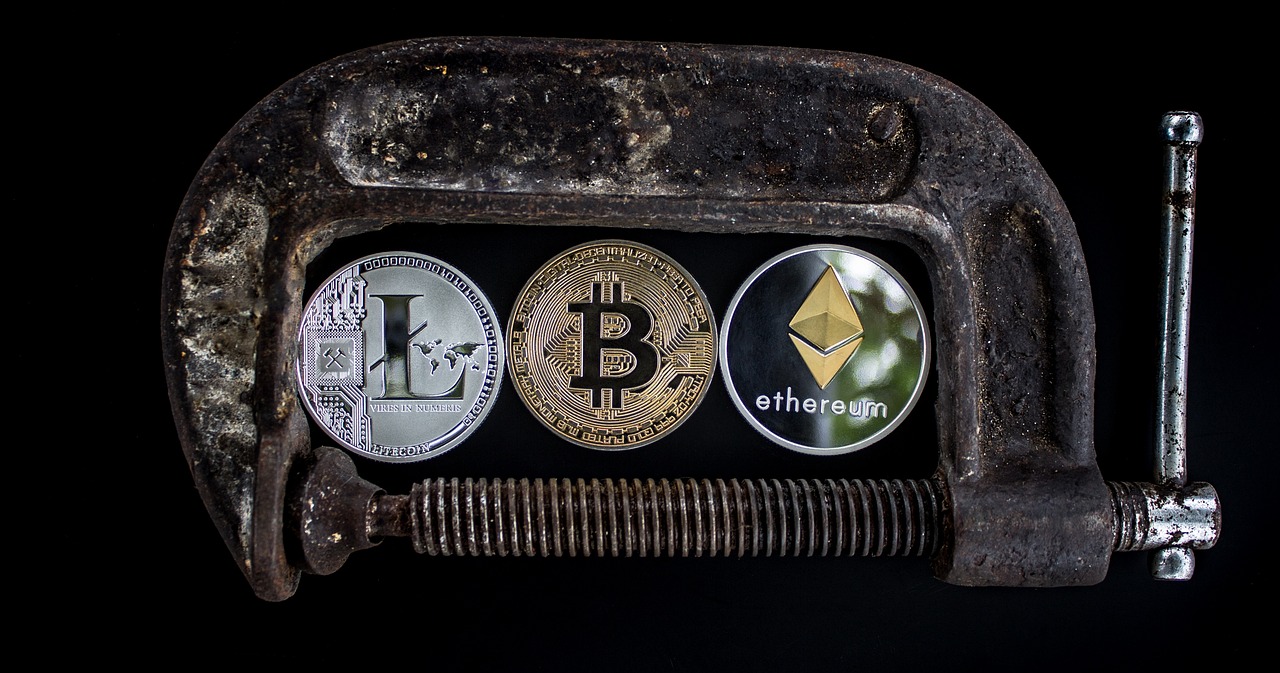
Types of Crypto Wallets
When diving into the fascinating world of cryptocurrency, one of the first things you need to familiarize yourself with is the concept of crypto wallets. Think of a crypto wallet as a digital bank account, but instead of holding traditional currency, it stores your cryptocurrencies. Each type of wallet has its unique features, benefits, and drawbacks, making it crucial to choose the one that aligns with your needs and investment strategy. In this section, we’ll explore the different types of crypto wallets available, including their pros and cons, so you can make an informed choice.
Crypto wallets can generally be categorized into two main types: hot wallets and cold wallets. Hot wallets are connected to the internet and are perfect for users who frequently engage in transactions. On the other hand, cold wallets are offline storage solutions designed to keep your assets safe from online threats. Let’s break down these categories further.
Hot wallets are like the cash you keep in your wallet for daily expenses—easily accessible and ready for use. They come in various forms, including web wallets and mobile wallets. These wallets are ideal for active traders who need quick access to their funds. However, the convenience of hot wallets comes with certain risks, such as exposure to hacking and phishing attacks. To mitigate these risks, users should follow best practices, like enabling two-factor authentication and using strong passwords.
Web wallets are accessible via your browser, making them incredibly user-friendly. They allow you to manage your cryptocurrencies from any device with internet access. However, this convenience can be a double-edged sword. While web wallets are easy to use, they are also more susceptible to security breaches. If you choose to go this route, opt for reputable providers and ensure they have robust security measures in place.
Mobile wallets are designed for users on the go, offering the flexibility to manage your cryptocurrencies from your smartphone. They are perfect for everyday transactions, like buying coffee or making quick trades. However, just like any app, mobile wallets can have vulnerabilities. It's essential to download apps from trusted sources and keep your device secure with the latest updates. Also, consider using biometric authentication for an extra layer of security.
Cold wallets, in contrast, are like a safe deposit box for your cryptocurrencies. They are not connected to the internet, making them significantly more secure against hacking attempts. Cold wallets come in several forms, including hardware wallets and paper wallets. They are particularly suitable for long-term investors who prefer to hold their assets rather than trade frequently. Setting up a cold wallet may require a bit more effort, but the peace of mind it provides is often worth it.
In summary, understanding the different types of crypto wallets is crucial for anyone looking to navigate the world of cryptocurrency. Whether you prefer the convenience of hot wallets or the security of cold wallets, each type has its place in the crypto ecosystem. Choosing the right wallet can make all the difference in how effectively you manage your digital assets.
- What is the safest type of crypto wallet? Cold wallets are generally considered the safest option for long-term storage due to their offline nature.
- Can I use multiple wallets? Yes! Many users opt for a combination of hot and cold wallets to balance convenience and security.
- Are web wallets safe? While they are convenient, web wallets can be vulnerable to hacking. Always choose reputable providers and employ strong security measures.
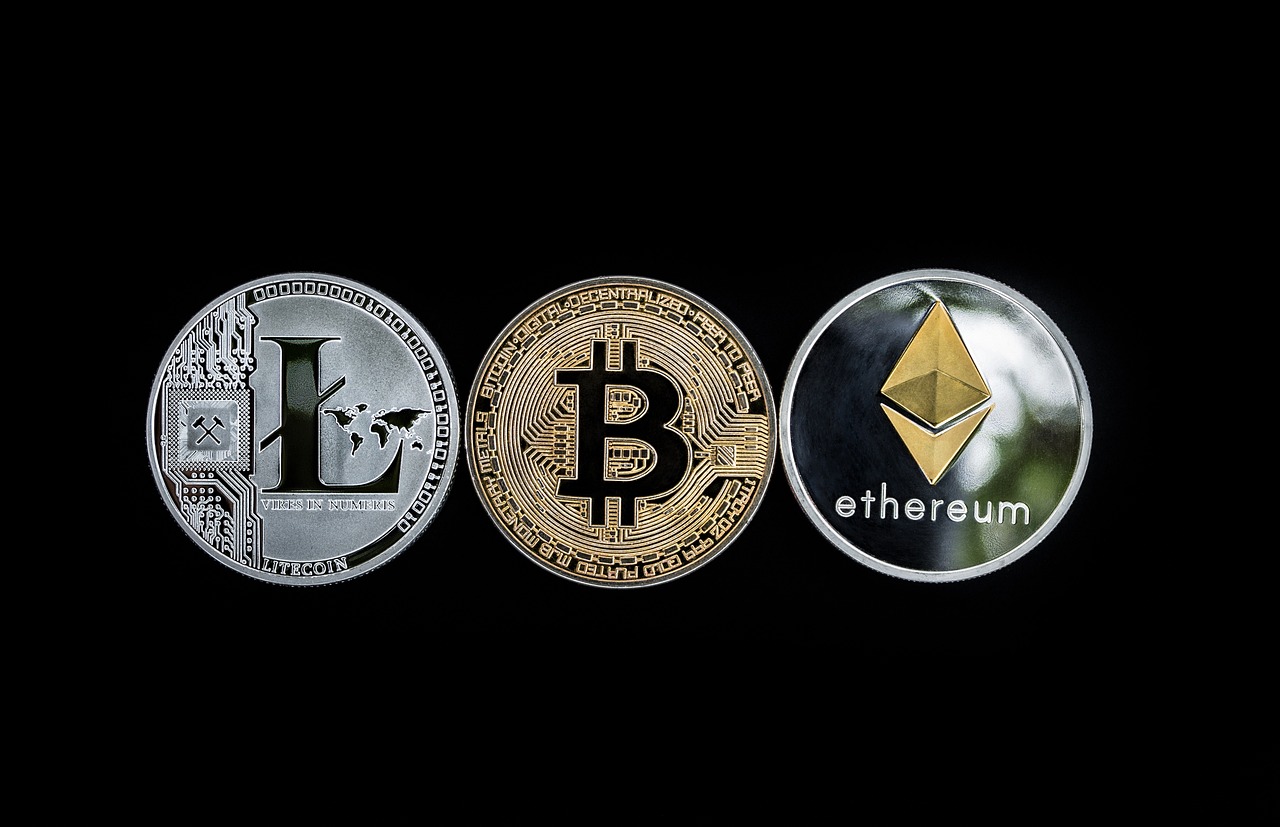
Hot Wallets
Hot wallets are the go-to option for many cryptocurrency enthusiasts looking to make frequent transactions with ease. Imagine having your cash in a wallet in your pocket, ready to spend at a moment's notice—that's essentially what a hot wallet offers for your digital assets. They are connected to the internet, allowing users to send and receive cryptocurrencies quickly without the hassle of complicated setups. However, with great convenience comes certain risks, which we'll explore in detail.
One of the primary benefits of hot wallets is their user-friendliness. Whether you’re a seasoned trader or a curious beginner, accessing your funds and executing transactions is typically just a few clicks away. This accessibility is particularly useful for those who engage in day trading or regularly buy and sell cryptocurrencies. However, this convenience can also be a double-edged sword. Because hot wallets are online, they are more susceptible to hacking attempts and phishing scams. Therefore, it’s crucial to adopt best practices to safeguard your assets.
When considering a hot wallet, you’ll encounter a few different types, including web wallets and mobile wallets. Each type has its unique features and security considerations. For instance, web wallets are accessible via your browser, making them incredibly convenient, but they can also expose you to potential vulnerabilities if the provider's security measures are lacking. On the other hand, mobile wallets allow you to carry your cryptocurrencies with you, offering the flexibility to make transactions on the go. However, this mobility can come with risks, especially if your device is lost or compromised.
To help you understand the differences better, here’s a quick comparison table:
| Type of Hot Wallet | Accessibility | Security Level | Best For |
|---|---|---|---|
| Web Wallets | Accessible from any browser | Medium | Frequent transactions |
| Mobile Wallets | Accessible via smartphone apps | Medium to High | On-the-go transactions |
In conclusion, while hot wallets provide an excellent means for quick and easy access to your cryptocurrencies, it’s essential to stay vigilant. Always use strong passwords, enable two-factor authentication where possible, and be cautious of phishing attempts. By taking these precautions, you can enjoy the benefits of hot wallets while minimizing the risks involved.
- What is a hot wallet? A hot wallet is a cryptocurrency wallet that is connected to the internet, allowing for easy access and transactions.
- Are hot wallets safe? While they offer convenience, hot wallets are more vulnerable to hacks and phishing attacks. Proper security measures should be taken.
- Can I store all my cryptocurrencies in a hot wallet? It's advisable to store only the amount you need for transactions in a hot wallet and keep larger holdings in cold storage for enhanced security.
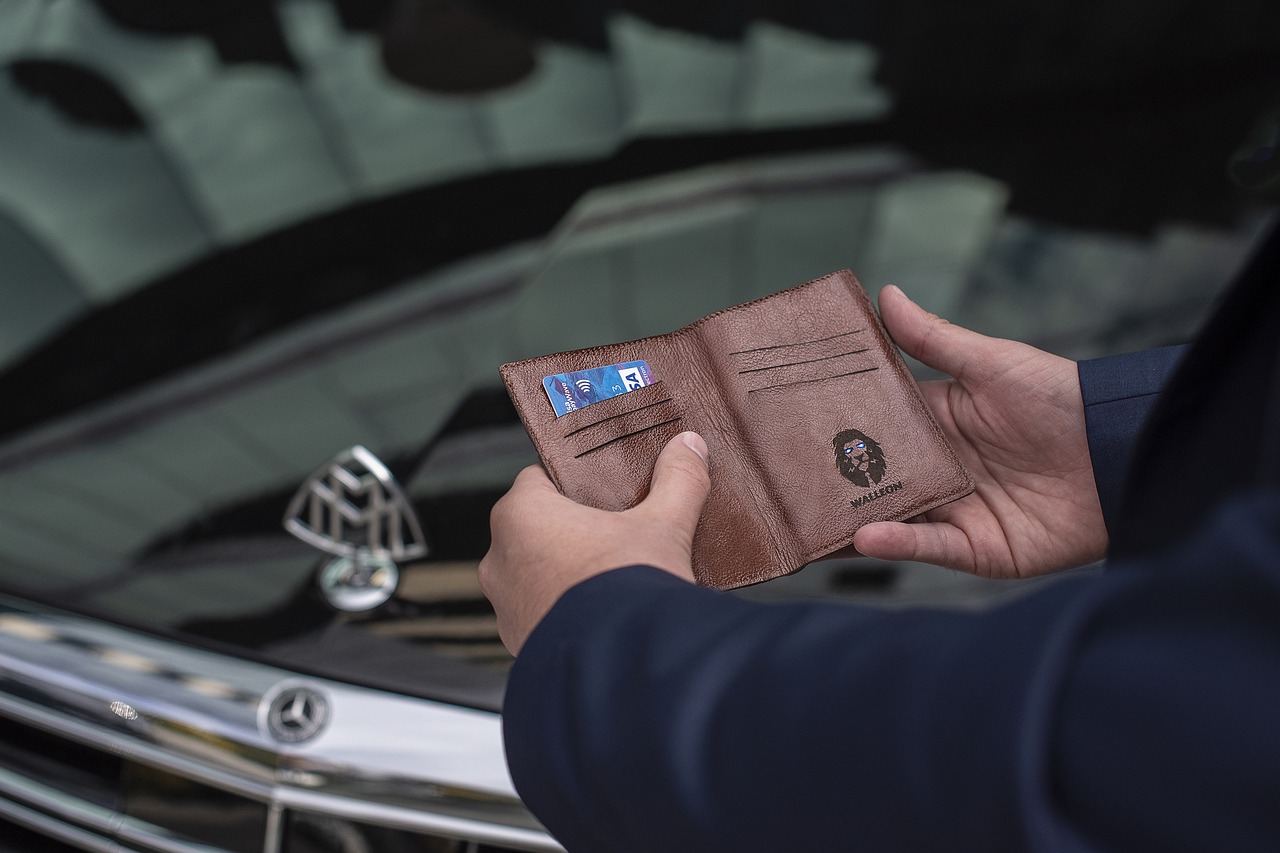
Web Wallets
Web wallets have become increasingly popular among cryptocurrency enthusiasts due to their convenience and ease of access. These wallets operate directly from your web browser, allowing you to store, send, and receive cryptocurrencies without the need for any software installation. Imagine being able to access your digital assets from anywhere in the world, as long as you have an internet connection! However, this convenience comes with its own set of challenges, particularly regarding security.
One of the main advantages of web wallets is their user-friendly interface. Most web wallets are designed to cater to beginners, offering simple navigation and straightforward features. Users can easily create accounts, manage their assets, and execute transactions with just a few clicks. However, the ease of use can sometimes lead to complacency regarding security measures. It’s crucial to remember that web wallets are often targeted by hackers due to their online nature. Therefore, users must be vigilant and adopt best practices to safeguard their funds.
When selecting a web wallet, consider the following important features:
- Security Features: Look for wallets that offer robust security measures such as two-factor authentication (2FA) and encryption.
- User Reviews: Research user experiences and feedback to gauge the reliability of the wallet.
- Supported Cryptocurrencies: Ensure that the wallet supports the cryptocurrencies you intend to store.
- Customer Support: A responsive customer support team can be invaluable in resolving any issues that may arise.
Among the most reputable web wallets are platforms like Coinbase, Blockchain.com, and Binance. These wallets not only provide a secure environment for your assets but also offer additional features such as trading capabilities and educational resources. However, it’s essential to remember that while these platforms take measures to protect your funds, the ultimate responsibility for security lies with you, the user.
In conclusion, while web wallets offer an incredible level of convenience and accessibility, they also require a proactive approach to security. Always use strong, unique passwords, enable two-factor authentication, and be wary of phishing attempts. By taking these precautions, you can enjoy the benefits of web wallets while minimizing the risks associated with online cryptocurrency storage.
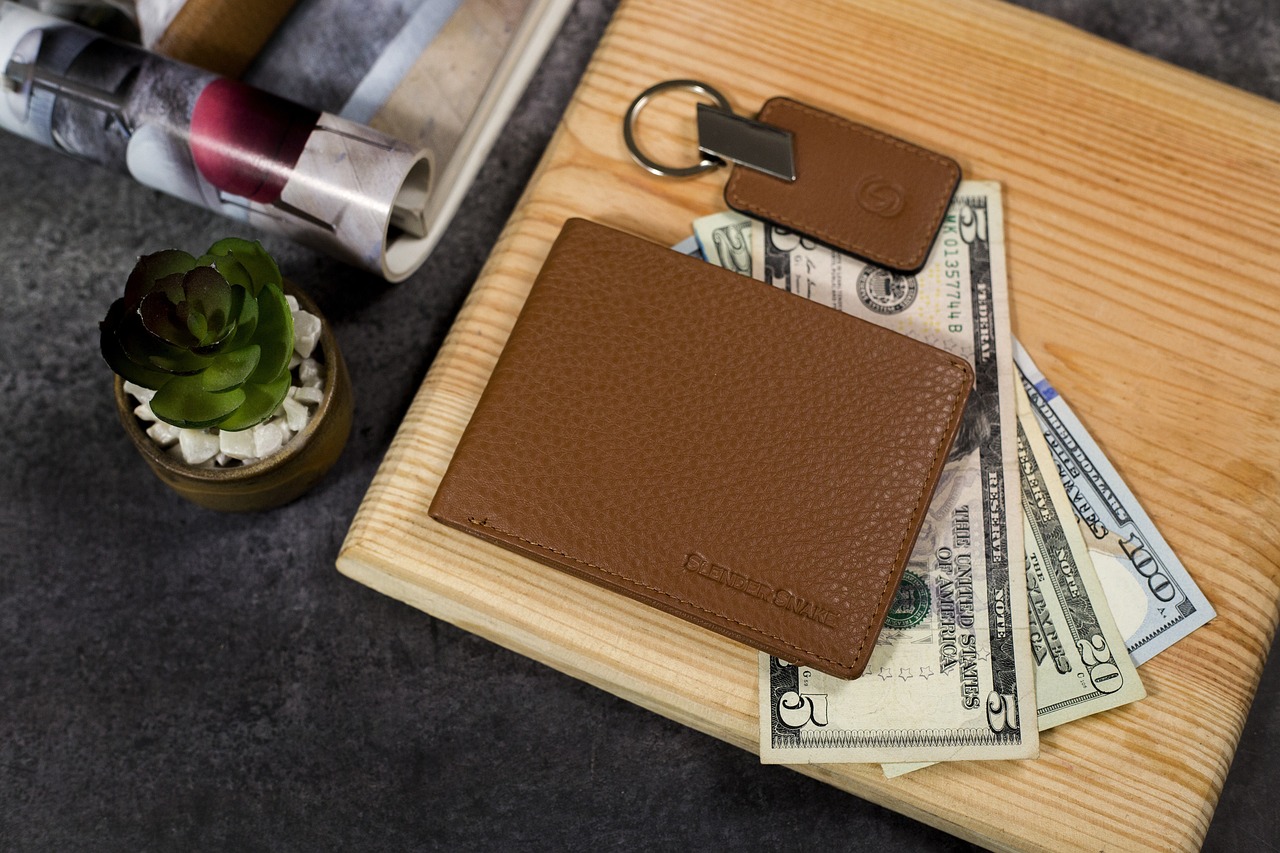
Mobile Wallets
Mobile wallets are revolutionizing the way we interact with cryptocurrencies, offering a blend of convenience and accessibility that traditional wallets simply can’t match. Imagine having your entire digital currency portfolio right in your pocket, ready to use at a moment's notice! These wallets are applications that you can download onto your smartphone, allowing you to send, receive, and manage your cryptocurrencies anytime, anywhere. However, while the ease of use is a significant advantage, it’s essential to understand the potential vulnerabilities that come with mobile wallets.
One of the most appealing aspects of mobile wallets is their user-friendly interface. They are designed for everyday users, making it easy for anyone to jump into the world of crypto without needing a degree in computer science. You can quickly check your balance, make transactions, and even exchange one cryptocurrency for another with just a few taps on your screen. However, this convenience comes with its own set of challenges. Mobile wallets are often connected to the internet, which means they can be susceptible to hacking and malware attacks.
To mitigate these risks, it’s crucial to choose a reputable mobile wallet provider. Look for wallets that offer robust security features, such as:
- Encryption: Ensures that your private keys are stored securely.
- Two-Factor Authentication: Adds an extra layer of security by requiring a second form of verification.
- Biometric Security: Utilizes fingerprint or facial recognition for access.
Additionally, always keep your wallet app updated to the latest version to benefit from security patches and improvements. It’s also wise to avoid connecting to public Wi-Fi when accessing your mobile wallet, as this can expose your sensitive information to potential threats. Think of your mobile wallet as a high-tech safe: while it’s incredibly convenient, you wouldn’t want to leave it unlocked in a crowded area.
Despite these precautions, mobile wallets are an excellent choice for those who frequently transact with cryptocurrencies. They are particularly useful for everyday purchases, such as buying coffee or paying for services, thanks to their integration with QR codes and NFC technology. Just scan a code, confirm the amount, and you’re done—it's that simple!
In summary, mobile wallets provide a fantastic way to manage your cryptocurrencies on the go, but they require a careful approach to security. By selecting a trustworthy wallet and implementing good security practices, you can enjoy the benefits of mobile wallets while keeping your assets safe. Remember, in the world of cryptocurrencies, being proactive about security can make all the difference!
Q1: Are mobile wallets safe to use?
A1: Mobile wallets can be safe if you choose a reputable provider and implement strong security practices, such as enabling two-factor authentication and keeping your app updated.
Q2: Can I use a mobile wallet for all cryptocurrencies?
A2: Not all mobile wallets support every cryptocurrency. Make sure to check which coins are supported before downloading a wallet.
Q3: What should I do if I lose my phone with my mobile wallet?
A3: If your phone is lost or stolen, you should immediately revoke access to your wallet through the wallet provider and use your backup recovery phrases to access your funds on a new device.

Cold Wallets
When it comes to securing your cryptocurrency investments, are the gold standard. Unlike hot wallets that are connected to the internet, cold wallets are offline storage solutions designed to keep your digital assets safe from online threats. Imagine storing your valuables in a safe instead of leaving them out on your kitchen counter; that’s the kind of security cold wallets provide for your cryptocurrencies. They are particularly appealing for long-term holders who want to minimize the risk of hacking or theft.
There are several types of cold wallets, each with its own unique features and benefits. The most common types include:
- Hardware Wallets: These are physical devices, similar to USB drives, that store your private keys offline. They are known for their security and ease of use, making them a popular choice among crypto enthusiasts.
- Paper Wallets: This method involves printing your public and private keys on a piece of paper. While it’s extremely secure against online threats, it does come with risks like physical damage or loss.
- Metal Wallets: A step up from paper wallets, metal wallets store your keys on a durable metal surface, making them resistant to fire, water, and other physical threats.
Setting up a cold wallet is relatively straightforward, but it requires careful attention to detail. For hardware wallets, you’ll typically need to:
- Purchase the wallet from a reputable manufacturer.
- Follow the setup instructions to create a secure PIN and backup phrase.
- Transfer your cryptocurrencies from a hot wallet to the cold wallet.
Once your cold wallet is set up, it’s crucial to keep it in a safe place. Think of it as a treasure chest; you wouldn't want to hide it in plain sight. Additionally, ensure that you keep your backup phrase secure and separate from the wallet itself. This way, even if the wallet is lost or damaged, you can still access your funds.
In summary, cold wallets are an essential tool for anyone serious about protecting their cryptocurrency investments. They offer a level of security that hot wallets simply cannot match, making them ideal for long-term storage. Whether you choose a hardware wallet, paper wallet, or metal wallet, the key is to understand how to use them effectively to safeguard your digital assets.
Q: What is the main advantage of using a cold wallet?
A: The primary advantage of a cold wallet is enhanced security. Since cold wallets are not connected to the internet, they are less vulnerable to hacking and online threats.
Q: Can I access my cryptocurrencies easily with a cold wallet?
A: While cold wallets provide superior security, accessing your funds is not as instantaneous as with hot wallets. You will need to connect your cold wallet to a device to make transactions.
Q: Are cold wallets completely safe?
A: While cold wallets are much safer than hot wallets, they are not infallible. Users must take precautions against physical damage, loss, or theft of the wallet itself.
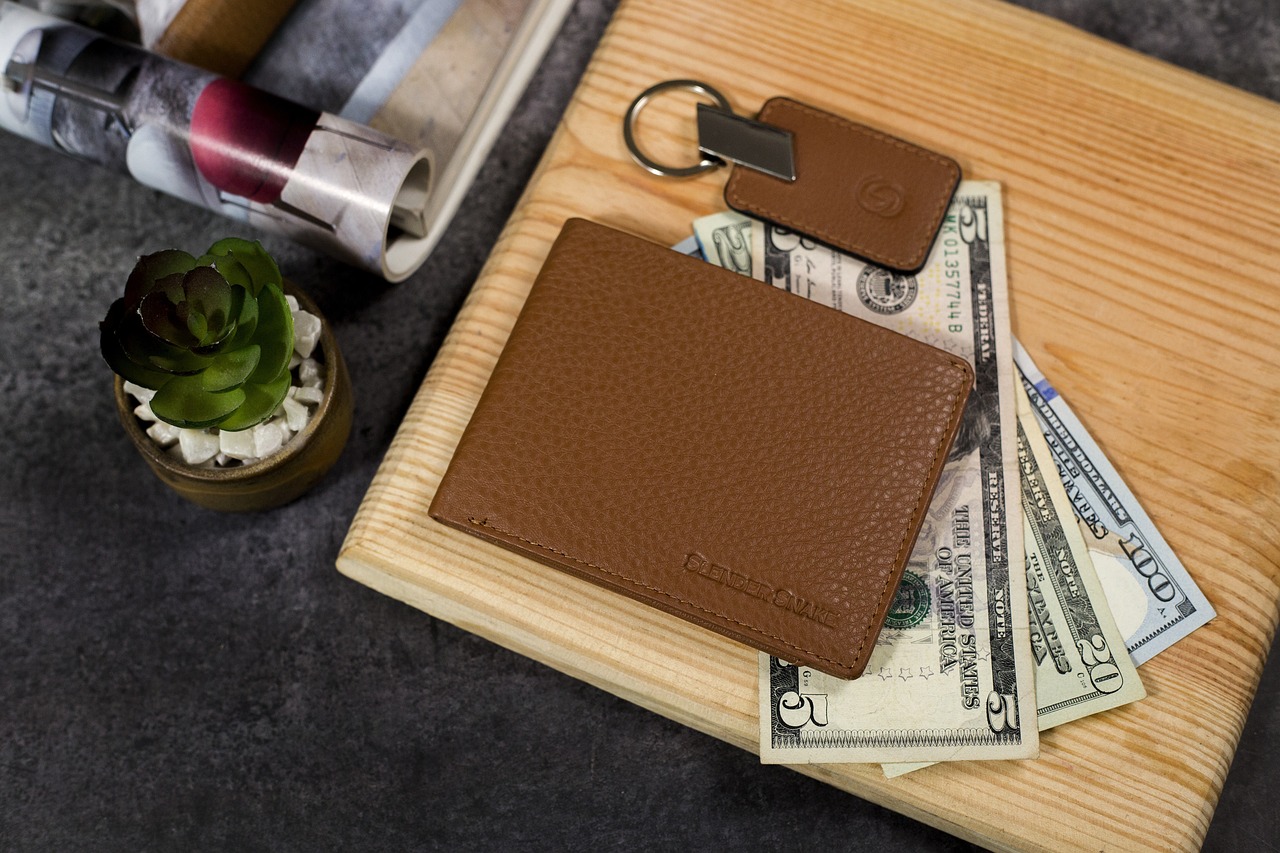
Security Measures for Crypto Wallets
When it comes to managing your cryptocurrency, security is not just an option; it’s a necessity. With the rise of digital currencies, hackers and scammers have become increasingly sophisticated, making it crucial for users to implement robust security measures. Think of your crypto wallet as a treasure chest; if you don’t lock it up properly, someone might just waltz in and take everything. So, how can you ensure that your digital assets remain safe?
One of the most effective ways to enhance wallet security is through two-factor authentication (2FA). This method adds an extra layer of protection by requiring not only a password but also a second form of verification, such as a code sent to your mobile device. Imagine trying to enter a secret club; the bouncer isn’t just going to check your ID—he’ll also ask for a secret handshake! Implementing 2FA is like having that bouncer at your digital door, ensuring that only you can access your funds.
Another critical practice is backing up your wallet. Just like you wouldn’t want to lose your physical wallet, losing access to your crypto wallet can be devastating. Regularly backing up your wallet ensures that you can recover your funds in case of device failure or accidental deletion. But how do you create a secure backup? Here are some best practices:
- Store your backup in multiple locations, such as an external hard drive and a cloud service.
- Use encryption to protect your backup files.
- Keep a physical copy of your recovery phrase in a safe place.
Recognizing phishing attempts is another essential security measure. Phishing scams often masquerade as legitimate communications from wallet providers or exchanges, tricking users into revealing sensitive information. Always double-check URLs and be wary of unsolicited emails or messages. It’s like receiving a letter claiming you’ve won a lottery you never entered—if it sounds too good to be true, it probably is!
In summary, securing your crypto wallet involves a combination of implementing two-factor authentication, regularly backing up your wallet, and staying vigilant against phishing attempts. By taking these precautions, you can significantly reduce the risk of losing your hard-earned cryptocurrency. Remember, in the world of digital assets, the more you prepare, the less likely you are to fall victim to cyber threats.
Here are some common questions people have about securing their crypto wallets:
| Question | Answer |
|---|---|
| What is the safest type of wallet? | Cold wallets are considered the safest as they are offline and less vulnerable to hacking. |
| How often should I back up my wallet? | It’s recommended to back up your wallet every time you make significant changes or transactions. |
| What should I do if I suspect a phishing attempt? | Do not click on any links, report the email or message, and change your passwords immediately. |
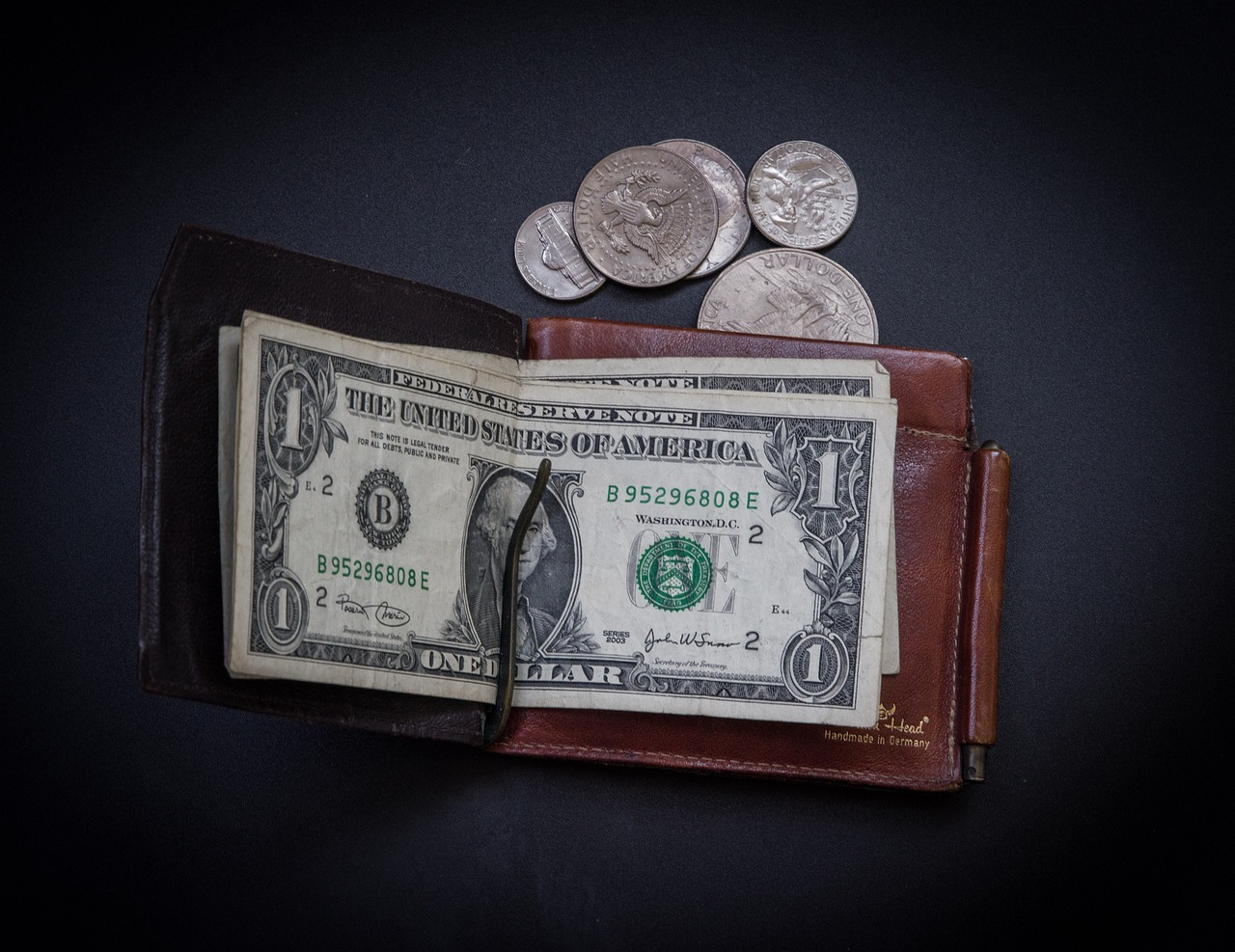
Two-Factor Authentication
When it comes to securing your crypto wallet, two-factor authentication (2FA) is like having a robust lock on your front door. It's an extra layer of security that helps prevent unauthorized access to your funds. Imagine you have a treasure chest filled with valuable coins—wouldn't you want more than just a simple key to protect it? That's precisely what 2FA offers!
2FA requires not just your password but also a second piece of information that only you have access to. This could be a code sent to your phone, a fingerprint scan, or even a hardware token. By implementing this additional step, you significantly reduce the risk of someone gaining access to your wallet, even if they somehow obtain your password.
To enable 2FA, follow these simple steps:
- Choose a reliable 2FA method, such as an authentication app (like Google Authenticator or Authy) or SMS codes.
- Access your wallet settings and look for the security or 2FA option.
- Follow the prompts to link your chosen 2FA method to your wallet.
- Make sure to save backup codes provided during the setup in a secure location.
It's essential to use strong, unique passwords alongside 2FA. Think of your password as the first line of defense, while 2FA acts as a fortified wall. If someone tries to breach your defenses with just your password, they’ll hit a brick wall when they’re asked for that second factor of authentication.
However, it's crucial to remain vigilant. While 2FA significantly enhances your security, it’s not foolproof. Be aware of phishing attempts where attackers might try to trick you into revealing your 2FA codes. Always verify the legitimacy of requests for your information and never share your codes with anyone.
In summary, enabling two-factor authentication on your crypto wallet is one of the smartest moves you can make to protect your digital assets. It adds that extra layer of security, making it much more difficult for unauthorized users to gain access. Remember, the world of cryptocurrency can be unpredictable, but with robust security measures like 2FA, you can navigate it with greater peace of mind.
What is two-factor authentication?
Two-factor authentication (2FA) is a security process that requires two different forms of identification to access an account. This typically includes something you know (like a password) and something you have (like a smartphone app that generates a code).
Why should I use 2FA for my crypto wallet?
Using 2FA adds an extra layer of security to your wallet, making it much harder for hackers to gain access even if they have your password. It's a simple yet effective way to protect your investments.
What are the best methods for 2FA?
Some popular methods include authentication apps like Google Authenticator or Authy, SMS codes sent to your phone, and hardware tokens. Each has its pros and cons, but authentication apps are generally considered the most secure.
Can I still access my wallet if I lose my phone?
Yes, most wallets provide backup codes when you set up 2FA. It's crucial to save these codes in a secure place, as they can help you regain access if you lose your phone or cannot receive codes.
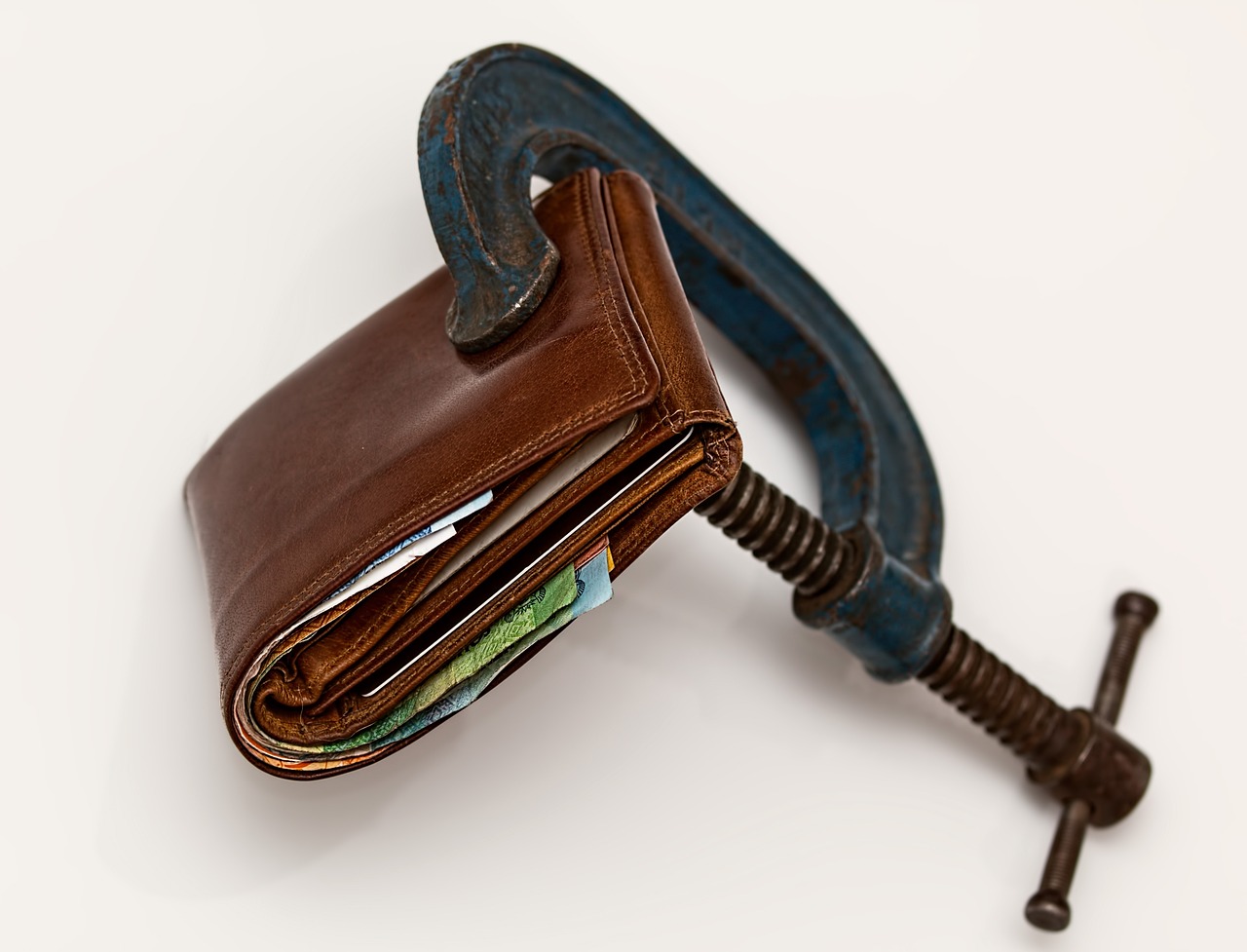
Backup and Recovery
When it comes to managing your cryptocurrency, are two of the most critical aspects you need to consider. Imagine losing access to your digital assets because of a device failure or accidental deletion. It’s a nightmare scenario, but it can happen if you don’t take the necessary precautions. So, how do you ensure that your crypto wallet is safe and your funds are recoverable? The answer lies in understanding the best practices for backing up your wallet and having a solid recovery plan in place.
First off, let’s talk about backups. A backup is essentially a copy of your wallet data that you can use to restore your funds in case something goes wrong. Most wallets provide a way to create a backup, usually in the form of a recovery phrase or seed phrase. This phrase is a series of words—typically 12 to 24—that act as a key to your wallet. It's crucial to write this down and store it in a safe place, away from prying eyes. Never store it digitally, as that could expose you to hackers. Instead, consider using a fireproof safe or a safety deposit box.
Next, let’s discuss recovery. What happens if you lose your device or forget your password? This is where your backup comes in handy. To recover your wallet, you will need to enter your recovery phrase into the wallet software. It’s like having a spare key to your house—if you lose the original, you can still get back in! However, remember that anyone with access to your recovery phrase can access your funds, so treat it like a precious secret.
Now, you might be wondering how often you should back up your wallet. The answer is simple: whenever you make significant changes to your wallet, such as adding new funds or changing settings. It’s also a good idea to set a regular schedule for backups, perhaps monthly or quarterly, to ensure you always have the most recent data. This way, you can sleep easy knowing that your crypto assets are secure.
To summarize, here are some key tips for effective backup and recovery:
- Always create a backup of your wallet when you first set it up.
- Store your recovery phrase in a secure, offline location.
- Regularly update your backup after any significant transactions.
- Test your recovery process to ensure it works smoothly.
By following these guidelines, you can significantly reduce the risk of losing access to your cryptocurrency. Remember, in the world of digital assets, being proactive is your best defense. So, take the time to set up a robust backup and recovery plan, and you’ll be well on your way to securing your financial future in the crypto space.
What is a recovery phrase? A recovery phrase is a series of words that serves as a backup for your wallet, allowing you to restore access if you lose your device or forget your password.
How often should I back up my wallet? You should back up your wallet whenever you make significant changes, such as adding funds or changing settings, and consider a regular schedule for backups.
Where should I store my recovery phrase? Store your recovery phrase in a secure, offline location, such as a fireproof safe or a safety deposit box, to protect it from unauthorized access.
Can I recover my wallet if I lose my recovery phrase? Unfortunately, if you lose your recovery phrase, you typically cannot recover your wallet or access your funds.
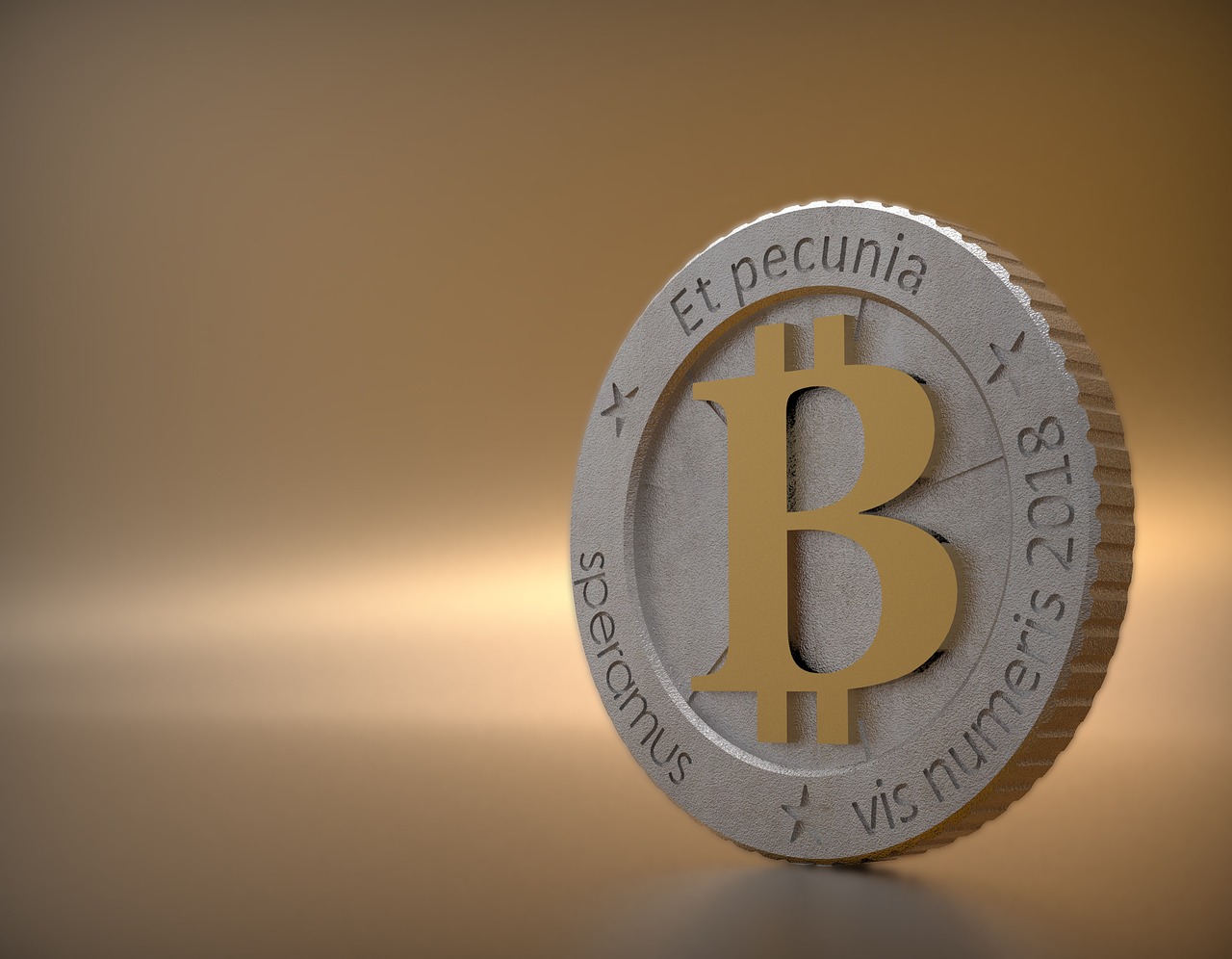
Practical Guides for Using Crypto Wallets
When diving into the world of cryptocurrency, understanding how to use your crypto wallet effectively is crucial. Just like having a bank account, your crypto wallet is the key to accessing your digital assets. But how do you set one up? And what about making transactions? Don’t worry; we’ve got you covered with practical guides that will help you navigate these waters with ease.
First things first, let’s talk about setting up a wallet. Depending on the type of wallet you choose—be it a hot wallet for everyday transactions or a cold wallet for long-term storage—the setup process can vary. For hot wallets, the process is generally straightforward. You’ll need to download a wallet application or create an account on a web platform. Here’s a simple step-by-step guide to get you started:
- Choose Your Wallet Type: Decide whether you want a hot or cold wallet based on your needs.
- Download the App or Create an Account: If you’re going for a hot wallet, download the app from a trusted source or sign up on a reputable website.
- Follow the Setup Instructions: Most wallet applications will guide you through the setup process, including creating a strong password and backing up your wallet.
- Secure Your Wallet: Enable two-factor authentication if available, and always keep your recovery phrase safe.
Now that you have your wallet set up, let’s move on to making transactions. Sending and receiving cryptocurrencies can be as simple as sending an email. However, there are a few important steps to ensure your transactions are secure:
- Sending Cryptocurrency: To send crypto, you'll need the recipient's wallet address. Double-check this address; even a single character off can result in lost funds!
- Receiving Cryptocurrency: To receive funds, simply provide your wallet address to the sender. You can usually find this in your wallet under the "Receive" section.
- Tracking Transactions: Most wallets allow you to view your transaction history. This is crucial for keeping track of your crypto assets.
As with any financial transaction, security is paramount. Always double-check addresses, and be aware of phishing attempts. If you ever feel suspicious about a transaction, take a step back and reassess before proceeding. Remember, the world of cryptocurrency is exciting but also filled with risks, so staying informed and cautious is key.
Lastly, as you grow more comfortable with your wallet, consider exploring advanced features. Some wallets offer integrated exchanges, allowing you to swap one cryptocurrency for another directly within the app. Others may provide tools for managing multiple assets, making it easier to keep track of your investments.
Here are some common questions that often arise when using crypto wallets:
- What is the safest type of crypto wallet? Cold wallets are generally considered the safest option for long-term storage since they are not connected to the internet.
- Can I recover my wallet if I lose access? Yes, as long as you have your recovery phrase and follow proper backup procedures, you can restore your wallet.
- What should I do if I suspect my wallet has been compromised? Immediately change your passwords, enable two-factor authentication, and consider transferring your assets to a new wallet.
In conclusion, mastering the use of crypto wallets is essential for anyone looking to venture into the world of cryptocurrency. By following these practical guides, you’ll be well on your way to managing your digital assets with confidence. So, what are you waiting for? Dive in and start exploring!

Setting Up a Wallet
Setting up a crypto wallet can feel like stepping into a new world, but don’t worry! It’s easier than you might think. The first thing you need to do is decide on the type of wallet that suits your needs. Are you looking for convenience, or is security your top priority? This choice will guide you through the setup process.
Once you've made your choice, the next step is to download or create your wallet. For hot wallets, you’ll typically visit a website or download an app from your device’s app store. For cold wallets, like hardware wallets, you’ll need to purchase the device from a reputable manufacturer. Remember, always do your research to avoid scams!
After obtaining your wallet, the setup process usually involves a few key steps:
- Create an Account: If you're using a hot wallet, you’ll need to create an account. This often involves providing an email address and setting a password. Make sure your password is strong—think of it as the key to your treasure chest!
- Backup Your Wallet: Most wallets will prompt you to create a backup. This is crucial! A backup is your safety net. Write down your recovery phrase or seed phrase and store it in a secure location. If you lose access to your wallet, this phrase can help you regain control.
- Enable Security Features: Don’t skip this step! Activate two-factor authentication (2FA) if available. This adds an extra layer of security, making it harder for unauthorized users to access your funds.
Once your wallet is set up, you can start depositing cryptocurrencies. Most wallets provide you with a unique address—think of it as your bank account number. You can share this address with others to receive funds. Just like sending a letter to a friend, you’ll need to make sure you have the correct address to avoid any mishaps.
Now, let’s talk about transactions. Making a transaction is usually straightforward. You’ll enter the recipient's address, specify the amount of cryptocurrency you want to send, and hit confirm. Some wallets may allow you to set transaction fees, which can affect how quickly your transaction is processed. Higher fees often result in faster confirmations, so keep that in mind!
In summary, setting up a wallet is an essential step in your cryptocurrency journey. By choosing the right wallet type, securing it properly, and understanding how to make transactions, you’re well on your way to managing your crypto assets like a pro. Just remember to stay vigilant and keep your wallet information private—after all, you wouldn’t want just anyone to have access to your treasure!
Here are some common questions that new users often have when setting up their crypto wallets:
- Can I use multiple wallets? Absolutely! Many users prefer to have multiple wallets for different purposes, such as a hot wallet for daily transactions and a cold wallet for long-term storage.
- What happens if I lose my recovery phrase? If you lose your recovery phrase, you may lose access to your funds permanently. Always store it in a safe place.
- Are crypto wallets safe? Yes, if you follow best practices such as using strong passwords, enabling 2FA, and keeping your recovery phrase secure, your wallet can be very safe.
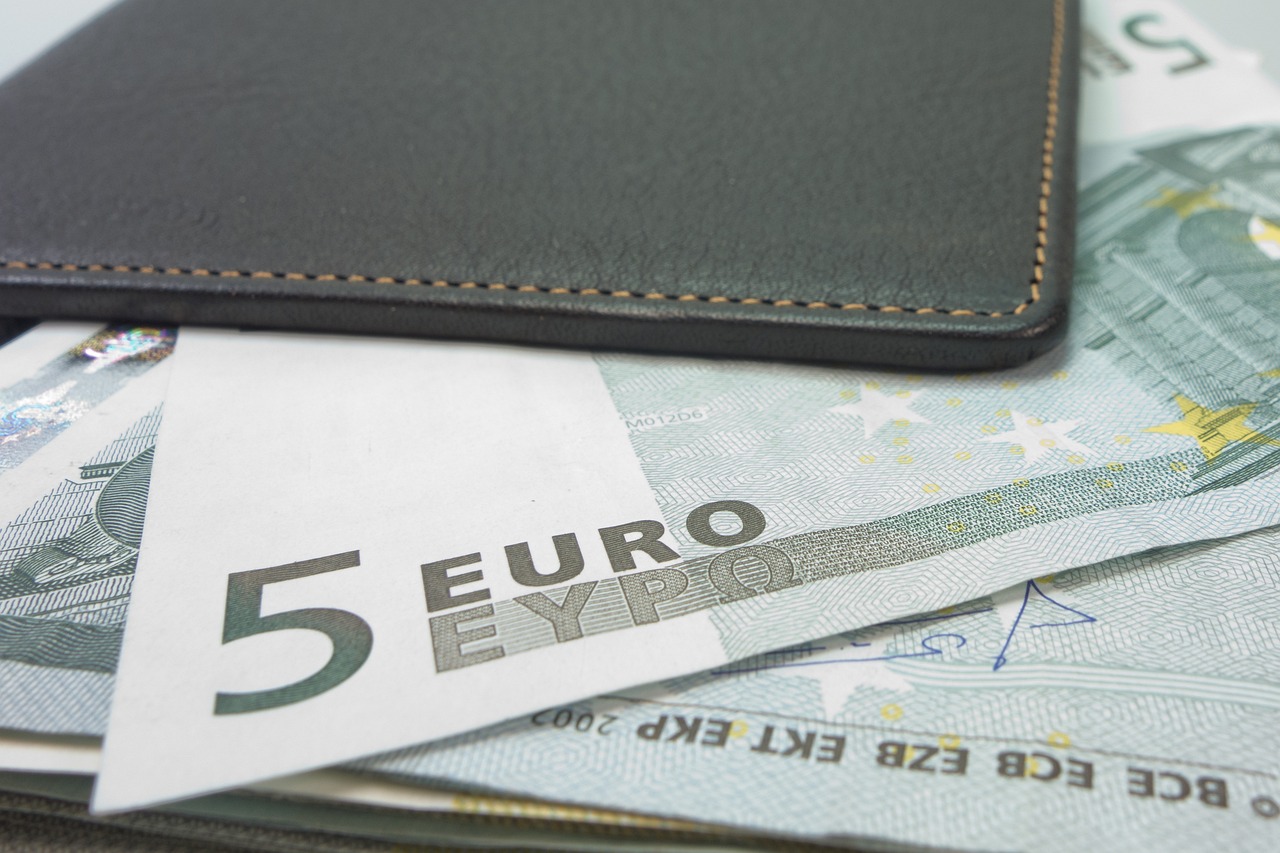
Making Transactions
When it comes to with your crypto wallet, understanding the process is crucial. Imagine your wallet as a digital bank account, but instead of dollars, you’re dealing with cryptocurrencies like Bitcoin or Ethereum. The beauty of these digital assets is that they allow for quick and efficient transactions, but there are some nuances to keep in mind.
First things first, before you dive into sending or receiving cryptocurrencies, ensure that your wallet is properly set up and secured. This means having strong passwords, enabling two-factor authentication, and keeping your private keys safe. Think of your private key as the key to your safe; if someone gets hold of it, they can access all your valuable assets.
Now, let’s break down the transaction process into a few simple steps:
- Sending Cryptocurrency: To send crypto, you’ll need the recipient’s wallet address. This is like an email address for cryptocurrencies. Make sure to double-check the address, as transactions are irreversible!
- Receiving Cryptocurrency: When someone sends you crypto, they will need your wallet address. Make it easy for them by copying and pasting it directly from your wallet interface.
- Tracking Transactions: Most wallets provide a transaction history feature. This allows you to see all your past transactions, making it easier to track your assets. You can also use blockchain explorers to verify transactions on the public ledger.
One of the most important aspects of making transactions is understanding the transaction fees. Just like a bank might charge a fee for wire transfers, crypto transactions may incur fees based on network congestion and the type of cryptocurrency you are using. Always check the fee before confirming a transaction to avoid surprises!
Additionally, when making transactions, it’s wise to start with a small amount, especially if you are new to the process. This way, you can familiarize yourself with how the transaction works without risking a large sum. Think of it as dipping your toes in the water before diving in!
In summary, making transactions with your crypto wallet is straightforward once you understand the basics. Always prioritize security, double-check addresses, and keep an eye on transaction fees. As you gain more experience, you’ll find that managing your crypto assets becomes second nature.
Here are some common questions that beginners often have about making transactions with crypto wallets:
- What happens if I send crypto to the wrong address? Unfortunately, if you send cryptocurrency to the wrong address, it's nearly impossible to recover it. Always double-check the recipient's address!
- Are there limits on how much I can send or receive? Most wallets do not impose limits, but some exchanges might have restrictions based on your account verification level.
- How long does a transaction take? Transaction times can vary. Typically, Bitcoin transactions can take anywhere from a few minutes to several hours, depending on network congestion.
Frequently Asked Questions
- What is a crypto wallet?
A crypto wallet is a digital tool that allows you to store, send, and receive cryptocurrencies. Think of it as a virtual bank account, but instead of holding traditional currency, it holds digital assets like Bitcoin or Ethereum.
- What are the different types of crypto wallets?
There are several types of crypto wallets, including hot wallets (online wallets) and cold wallets (offline storage). Hot wallets are convenient for frequent transactions, while cold wallets are ideal for long-term storage and security.
- How do I choose the right wallet for my needs?
Choosing the right wallet depends on your usage. If you plan to trade frequently, a hot wallet may be best. For long-term holding, consider a cold wallet. Always assess security features, ease of use, and your personal investment strategy.
- Are crypto wallets secure?
While crypto wallets can be secure, their safety largely depends on the type of wallet and the security measures you implement. Using two-factor authentication, strong passwords, and keeping backups can significantly enhance your wallet's security.
- What is two-factor authentication and why is it important?
Two-factor authentication (2FA) adds an extra layer of security by requiring not just a password but also a second form of verification, like a text message code. This makes it much harder for unauthorized users to access your wallet.
- How do I back up my crypto wallet?
Backing up your crypto wallet typically involves saving your private keys or recovery phrases in a secure location. This ensures you can regain access to your funds if your device is lost or damaged.
- Can I recover my wallet if I forget my password?
If you forget your password but have a backup of your recovery phrase or private keys, you can restore your wallet. However, without these backups, recovering access may not be possible.
- What should I do if I suspect phishing attempts?
If you suspect phishing, immediately cease any interaction with suspicious emails or websites. Always verify the source and never share your private keys or recovery phrases. Report the phishing attempt to relevant authorities.
- How do I make transactions using my crypto wallet?
To make a transaction, open your wallet, enter the recipient's address, specify the amount, and confirm the transaction. Always double-check the recipient's address to avoid sending funds to the wrong wallet.



